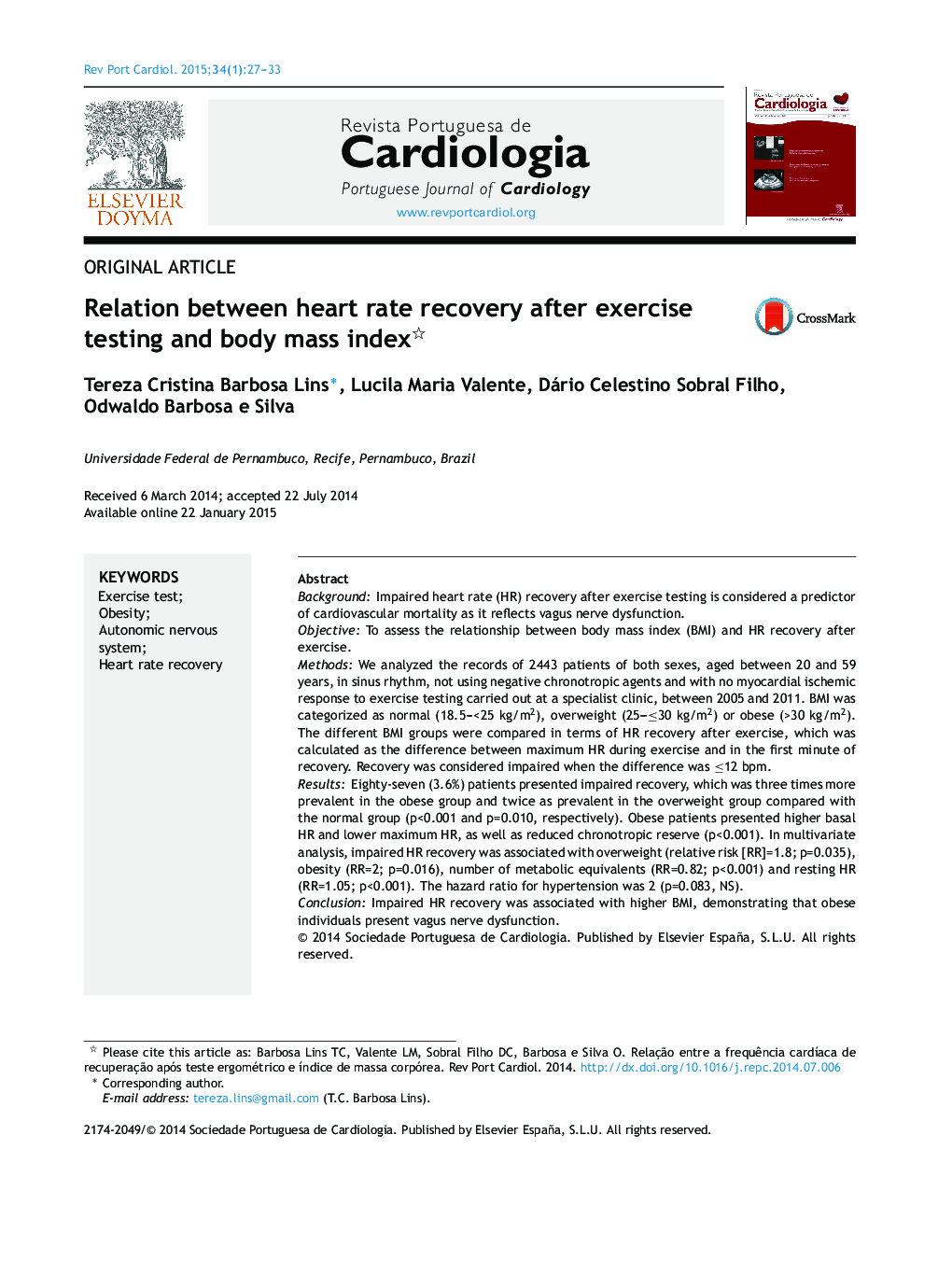| کد مقاله | کد نشریه | سال انتشار | مقاله انگلیسی | نسخه تمام متن |
|---|---|---|---|---|
| 3020199 | 1182292 | 2015 | 7 صفحه PDF | دانلود رایگان |
BackgroundImpaired heart rate (HR) recovery after exercise testing is considered a predictor of cardiovascular mortality as it reflects vagus nerve dysfunction.ObjectiveTo assess the relationship between body mass index (BMI) and HR recovery after exercise.MethodsWe analyzed the records of 2443 patients of both sexes, aged between 20 and 59 years, in sinus rhythm, not using negative chronotropic agents and with no myocardial ischemic response to exercise testing carried out at a specialist clinic, between 2005 and 2011. BMI was categorized as normal (18.5–<25 kg/m2), overweight (25–≤30 kg/m2) or obese (>30 kg/m2). The different BMI groups were compared in terms of HR recovery after exercise, which was calculated as the difference between maximum HR during exercise and in the first minute of recovery. Recovery was considered impaired when the difference was ≤12 bpm.ResultsEighty-seven (3.6%) patients presented impaired recovery, which was three times more prevalent in the obese group and twice as prevalent in the overweight group compared with the normal group (p<0.001 and p=0.010, respectively). Obese patients presented higher basal HR and lower maximum HR, as well as reduced chronotropic reserve (p<0.001). In multivariate analysis, impaired HR recovery was associated with overweight (relative risk [RR]=1.8; p=0.035), obesity (RR=2; p=0.016), number of metabolic equivalents (RR=0.82; p<0.001) and resting HR (RR=1.05; p<0.001). The hazard ratio for hypertension was 2 (p=0.083, NS).ConclusionImpaired HR recovery was associated with higher BMI, demonstrating that obese individuals present vagus nerve dysfunction.
ResumoFundamentoDeclínio atenuado da frequência cardíaca após teste ergométrico é considerado preditor de mortalidade cardiovascular, por refletir disfunção autonômica vagal.ObjetivoAvaliar a relação entre índice de massa corpórea (IMC) e recuperação da frequência cardíaca após teste ergométrico.MétodosForam incluídos registros de 2.443 pacientes de ambos os sexos, entre 20-59 anos, em ritmo sinusal, sem uso de cronotrópicos negativos e sem resposta isquêmica miocárdica ao teste ergométrico realizado em clínica especializada, entre 2005-2011. O IMC foi categorizado como: normal (18,5 kg/m2
Journal: Revista Portuguesa de Cardiologia (English Edition) - Volume 34, Issue 1, January 2015, Pages 27–33
